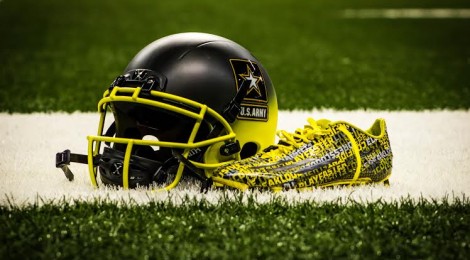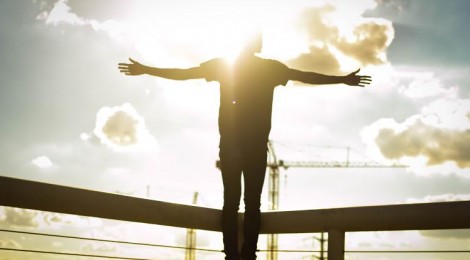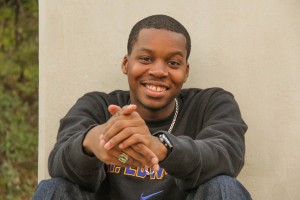Interview by Lucas Coyne
You work in a lot of different mediums. What is your favorite, and why?
For me, video was my first love. I started making videos in 2007, when I was in middle school. That’s when YouTube was starting to get popular and I was just learning how to do a little bit of everything. I had these communities I was involved with, people that I followed and talked to, back when YouTube was more of a community than just the top people and fans. Everyone was embraced by the people who were considered famous at the time. I just enjoyed making videos. At the time I was making sports highlights – those were quick to knock out and real fun. I was a big sports fan, so that was an easy thing for me to do. I started doing stuff for my family or friends, who fell in love and were brought to tears with the stuff I brought. I always liked bringing emotion out of people through my art. So I wanted to be able to make people laugh, cry, etcetera, etcetera. And it just grew over time in what I liked to do. So I do a little bit of everything video-wise and photography-wise.
What are the biggest influences for your work?
It’s weird. Everyone says I’m the next ‘insert director’. But films aren’t what inspire me. It’s really other artists, photographers, music, or YouTubers that drive my creativity. I don’t really want to go into the film industry. At the moment I want to go into music video direction. So anything can strike my mind. Right now, with music video directors there’s Hype Williams, Benny Boom, Chris Robinson, Dre Films… there’s a couple people that I’m looking at constantly that inspire me just from the little things. It could be the simplest flick of a light that someone does for five seconds that I think “Oh, I can turn that into something interesting,” and run off of that, get some people, and go shoot it. It’s just a matter of what I’m looking at and what catches my attention.
So would you say you prioritize aesthetic over plot?
It’s a mixture, because the plot is still very important. It needs to look good and make sense – it doesn’t have to be Oscar-worthy or whatever, but something that people can grasp and enjoy, but aesthetically looks great. That’s the goal for me.
Where have been your biggest challenges?
My number one thing is quality, not as in bad quality on my part, but the people I look up to and watch all over the internet, their quality is to me three notches better than my own. So my thing is: how can I push the equipment I have to their lengths? Now of course there’s a lot of extra stuff they do besides just the camera that makes their stuff look way better. But the biggest thing is figuring out how I can look like this person with the equipment I have. I want production quality much higher than it is, even though it’s pretty hard. I have really high standards for myself. I’m usually my biggest enemy when it comes to everything.
Are there major themes you find yourself returning to often?
Not necessarily. A lot of my work depends on what kind of mindset I’m in at the time. Some photoshoots I do I might say “Hey, I want to go with a sophisticated look in a parking garage,”—which I did just a few days ago—”Let’s go shoot it.” Pick someone go shoot it, it comes out. Two years ago I did my first short film, it was on bullying and anti-suicide. That was just the vibe I was in at the moment, because I used to be bullied when I was younger and a lot of my friends knew people who had committed suicide around that time because of bullying and other reasons, and I wanted to make a film showing the effects, and I got a lot of praise from it.
You’ve talked about YouTube, do you feel like the technology we have today makes it easier or harder to produce art?
It’s both. It’s easier because you can take a smartphone and attach a $20 clip-on lens to it and get the quality of some higher end cameras. That has a nice look to it, edit it, and you’ve got a nice video up. But it also makes it harder, because you look at yourself and this looks great, but it’s not funny or it’s not interesting or what’s the purpose of this? You’re using all this money and thinking “I bought all this equipment, whatever I make is going to be great!” But there’s nothing behind it, no motivation, no creativity. It’s not going to go anywhere. So it’s easier because you can actually go out and do the things you want to at a cheaper price, but that doesn’t mean that you’re going to instantly succeed. People rely on the technology and their main thing is to become famous and not to become good at what they do. Fame comes along with it. I’d rather make money and not be famous than be famous and be struggling to make anything.
What advice would you give an aspiring artist?
The number one thing is to go out and do it. Art is so subjective that a lot of people won’t appreciate what you do because that’s not what they’re interested in, and some will try to break you down just because you’re doing something. Especially in a field that’s diluted with a lot of people, because everybody has a camera now, everyone can do everything at this point. It’s a matter of picking out who’s good and who’s not, and what’s actually good and what’s just trending and is convenient to the times. So work on your craft instead of worrying about having followers or subscribers and just make good content. Because eventually someone’s going to see it and that’s what’s going to jumpstart you.
So, focus on content and quality rather than popularity.
You can only last so long. When you keep making stuff that goes after whatever trend is going on, once that trend is over, people aren’t really going to want to go back and watch your work. Now, you can have trends within it, but you shouldn’t be depending on that. You should be depending on your own content. Build your own style. It’s fine to be influenced by people, but make sure you have your own unique style as you get better and as you go on. It’s a process. I’ve been doing this since 7th grade and I’m a sophmore in college now. For myself, I’d say I’ve gotten pretty good over that timeframe, but you can always do better. I’m only 19 right now, going on 20 in a few weeks and the sky’s the limit right now for me or anybody else who’s joining. Some people aren’t good when they first start out. Some people take a long time to grind, but just go at your own pace.
I think one thing that this campus needs… since we’re in such a media-driven world, that this campus isn’t dependent on media is beyond me. We have a couple of outlets in Topper Radio and Topper TV, and they don’t really get a lot of promotion. A lot of people don’t know about them or have heard negative things, that it’s just a school thing. But we need a lot of people who are interested in the art to join these clubs and bring them up. We have a lot of talented people on this campus that people don’t even know about. If we all could come together and do things together, people would see that there’s some really creative people all here at St. Edward’s. It’s a hard thing to grasp that people can be so talented and within twenty feet of you, it’s strange. So I’d like people to start promoting their work, pushing their work out there. I didn’t know they could sing, I didn’t know they could draw, I didn’t know they could do whatever. Those hidden talents that you just didn’t think people would be interested in seeing or hearing… just go for it!
Rashad White is a 19-year old self-taught photographer and videographer from San Antonio, Texas. He specializes in portrait photography and sports highlight tapes but has shot and recorded everything from live music events to music video, short films, weddings, and skits. Rashad is currently in his sophomore year at St. Edward’s University in Austin, Texas studying Photocommunications. Along with film & photography, he also writes for TheOriginalSociety.com and has a podcast with DJ2ntenz on Soundcloud called The CLTRSHCK Show (pronounced Culture Shock).
For more from Rashad:
Website: FreshSince95.com
Video: YouTube.com/RashadWhiteOfficial
Photography: behance.net/rashadwhite95




Comments are closed, but trackbacks and pingbacks are open.